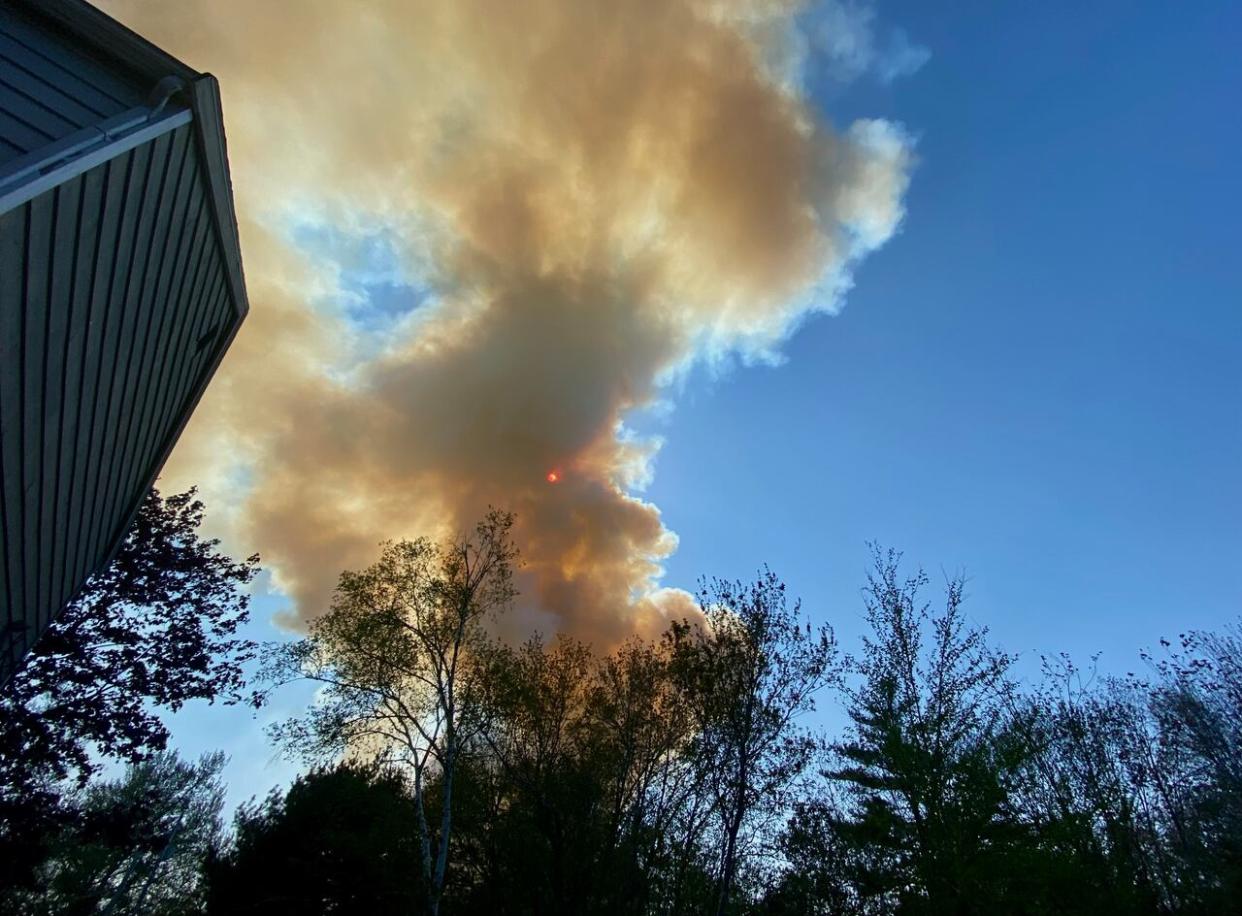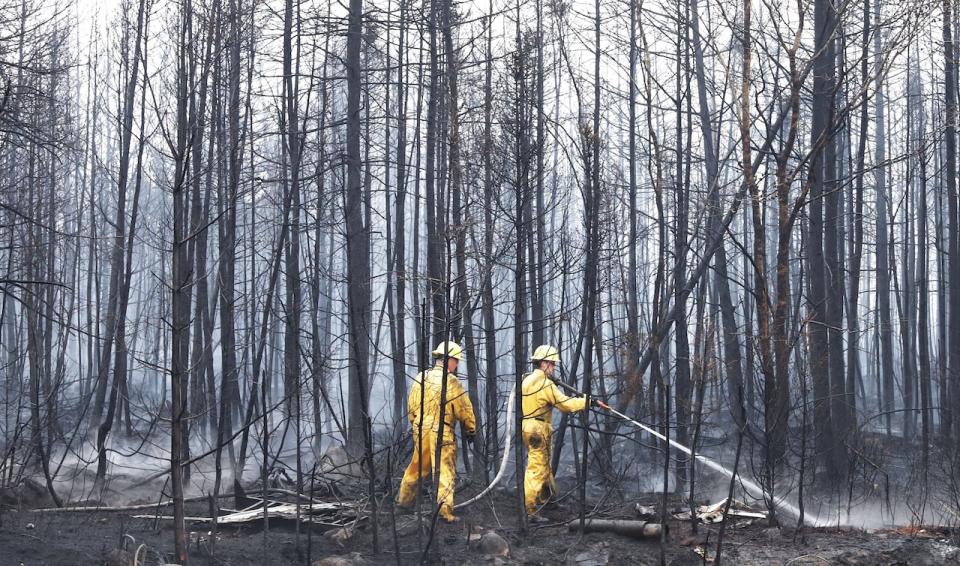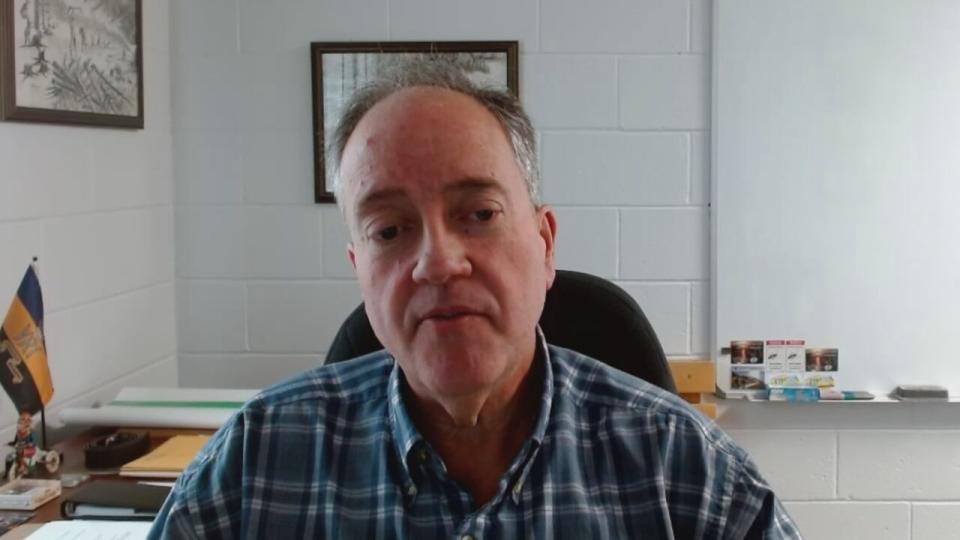Review says N.S. wildfire response was 'impressive,' but finds staffing, training gaps

An independent review of the fires that destroyed more than 200 homes and burned 25,000 hectares of Nova Scotia forest last year is generally positive about how the province deployed resources, but noted many areas for improvement.
The Nova Scotia government paid Calian, a consulting and research firm, $45,500 to do an "after-action report" on the wildfires that started on the South Shore at Barrington Lake, and in the Halifax-area community of Tantallon.
The Ontario-based consulting firm reviewed more than 200 responses to email surveys. Respondents included agencies, first responders, municipal and provincial governments, including Department of Natural Resources (DNR) staff.

Annapolis Royal firefighters Jason Rock, left, and Anthony Lopiandowski, put out hotspots in the Birchtown area of Shelburne County during last year's wildfires. (Communications Nova Scotia)
The review highlighted a number of strengths in the province's response to the wildfires, including:
There were no deaths or major injuries reported, and many homes were spared.
Organizations involved in the response "demonstrated flexibility and adapted to changes quickly while working in a team environment."
There was a "level of commitment and individual sacrifice [that] was unparalleled" in the province.
DNR achieved an "impressive" level of staff mobilization and was "highly organized."
Staffing, training and response plans
Although the review described the overall response to the fires as well co-ordinated, it found gaps in a number of areas, including training and department response plans.
Among its key findings:
Roles and responsibilities in a multi-agency response effort "were not always well understood."
"Some agency/municipal plans are outdated, inflexible, and do not adequately address the growing risks and response requirements of wildfires."
Provincial air support during the wildfires "was quickly exhausted and organizations then had to rely on the availability of other agencies for the response.
The review also found staffing levels were inadequate, and some of those involved in responding to the fires lacked training for the jobs they were called on to do.
A third of the people surveyed felt that staffing levels for the Barrington Lake and Tantallon fires were inadequate.
When it came to training, the report noted that about a quarter of the respondents said they "took on new roles" and more than 40 per cent of DNR staff surveyed said they weren't trained for some of the additional roles they acquired.
About a third of respondents also felt they did not have enough equipment such as vehicles or field maps, the report said.
'Very confident in the staff'
Jim Rudderham, DNR's director of fleet and forest protection, said he's believes the province has the resources in place to properly protect against wildfires.
"I'm very confident in the staff that we have," he said. "They're well trained, they're well experienced, and they can certainly take others under their wings to help them through those kind of incidents [that] we saw last year."

Jim Rudderham is director of fleet and forest protection at DNR. (CBC News)
The department has about 300 trained firefighters to respond to wildfires.
Rudderham defended putting people in jobs they weren't always trained to do.
"I must remind everyone that that fire was unprecedented," he said. "We had a lot of situations that we were put in, as well happened on the fly, that we had to deal with. We didn't have time to sit back and get proper training."
He said the department would offer additional training for staff in the coming year to avoid those situations.
A report prepared for Halifax council last fall that focused on the Tantallon wildfire raised concerns about a breakdown in communications, which had a "detrimental impact" on the initial response.
That report made nearly 50 recommendations covering areas such as technology, evacuation routes and ways to try to mitigate the threat of a fire.
MORE TOP STORIES


